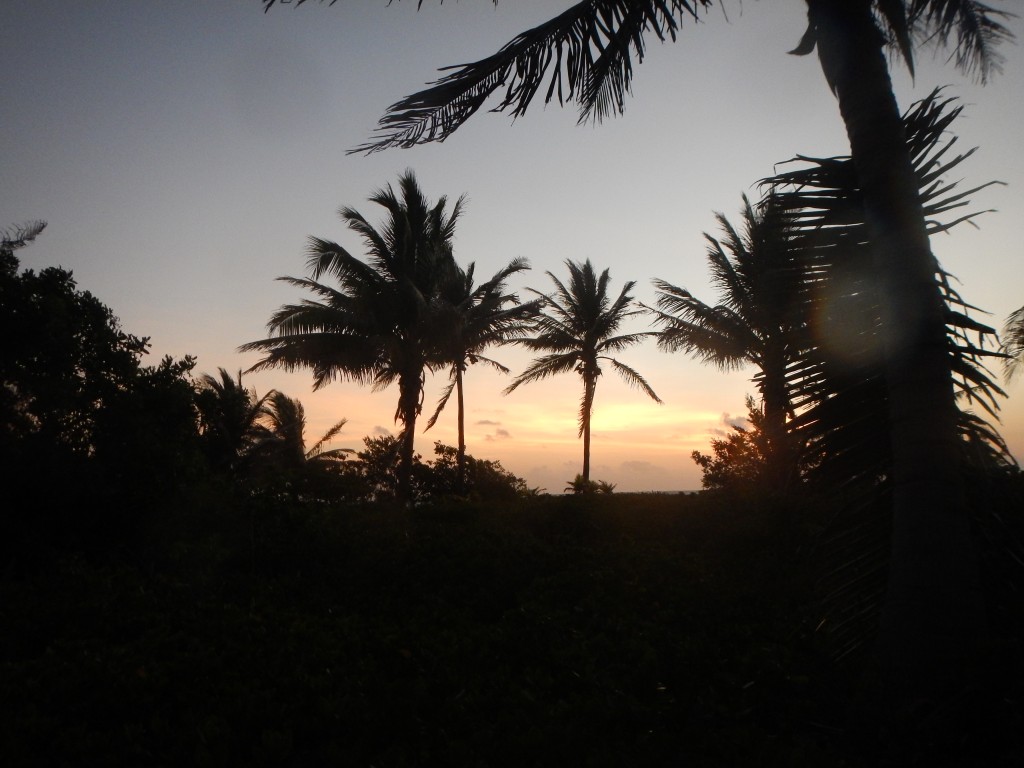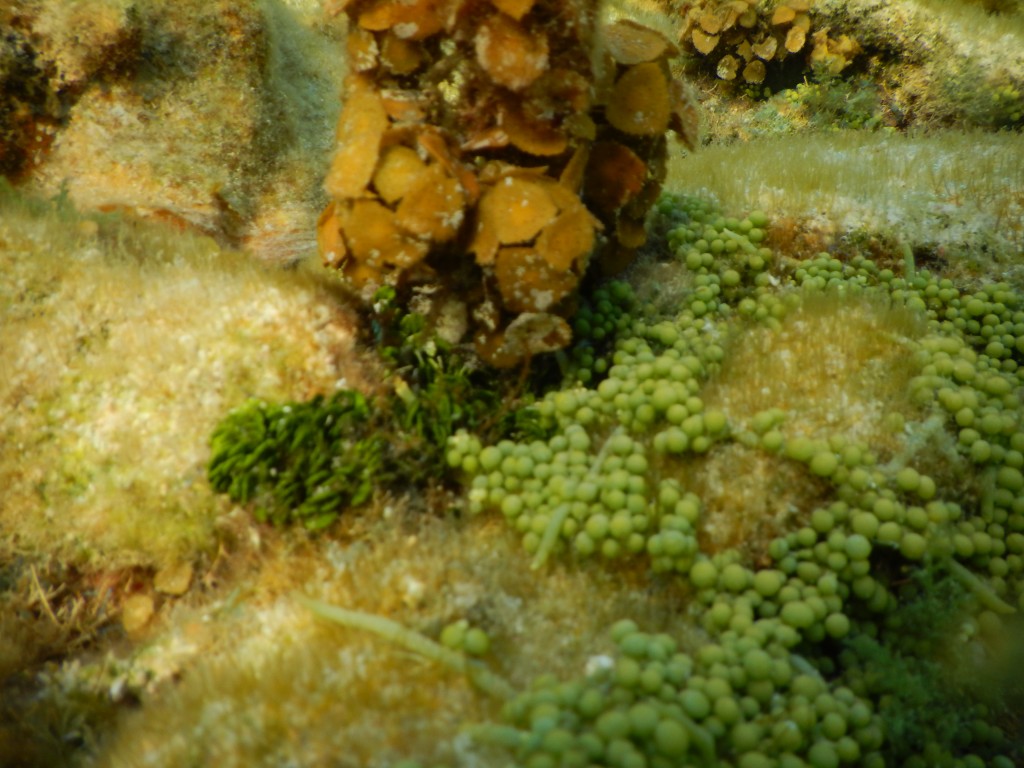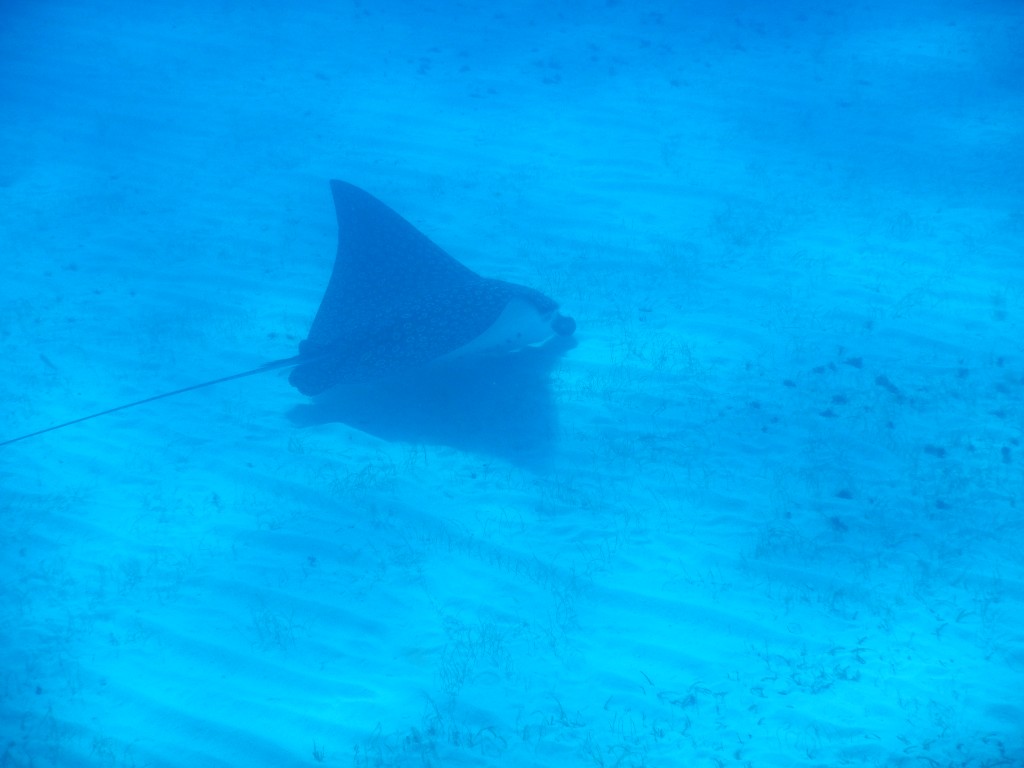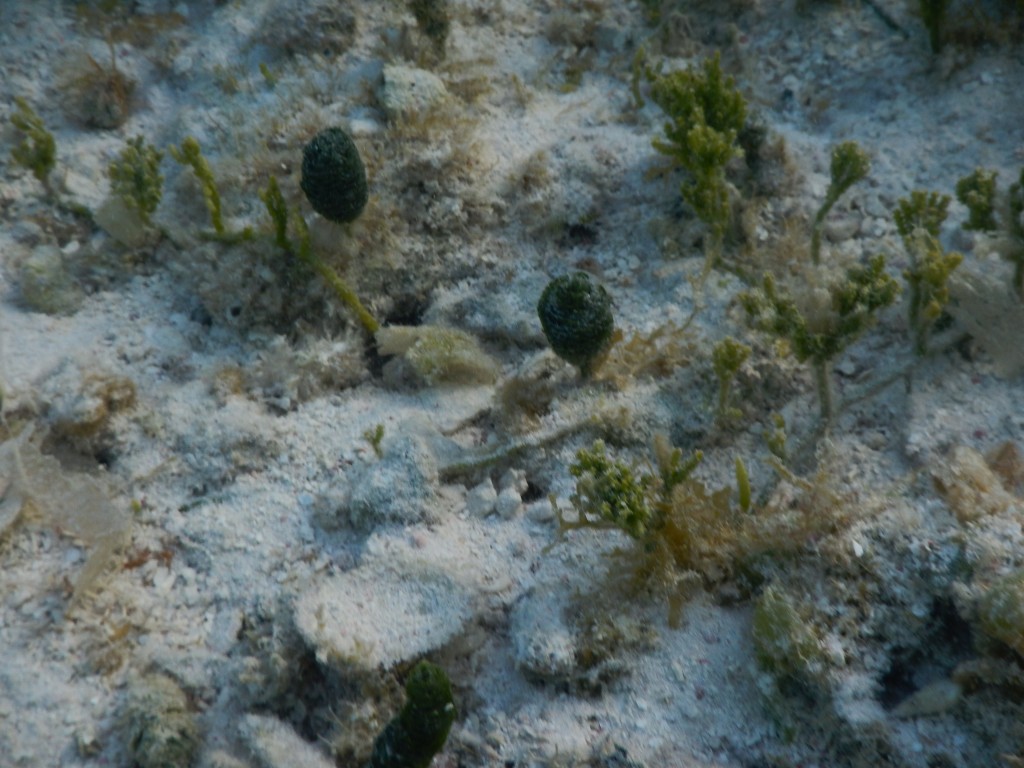This morning we spent an hour on the back reef on the northeast side of Middle Caye. We had visited the area on May 28th, but this time we went to collect all of the biodiversity of the zone that we could. Most of what we were able to collect was algae because it is usually stationary and safe to touch. We also collected some mollusks and crustaceans. A lot of the hermit crabs that we found in the water were occupying old conch shells, which shows how large they were. It was interesting to compare how the live conchs and hermit crabs in conch shells looked when they were retracted. Our jellyfish expert, Sam, found dead box jellyfish floating near the shoreline and collected them even though their tentacles are very dangerous to touch.
We collected a lot of the species of algae that I had already seen last time we visited the back reef, but it was good to consolidate the data. Overall we collected samples of Halimeda incrassata, H. opuntia, Dictyosphaeria cavernosa, Penicillus capitatus, Rhipocephalus phoenix, Udotea conglutinata, U. flabellum, Caulerpa cuppressoides, C. racemosa, and possibly Chaetomorpha linum. It was difficult to tell the difference between the Penicillus species because some seemed to have a slightly flat top or a slightly bigger top than the descriptions of P. capitatus that I was able to find in the literature. I am not sure that the filamentous algae that we collected were C. linum. They seemed similar to the description, but I couldn’t completely rule out other species.

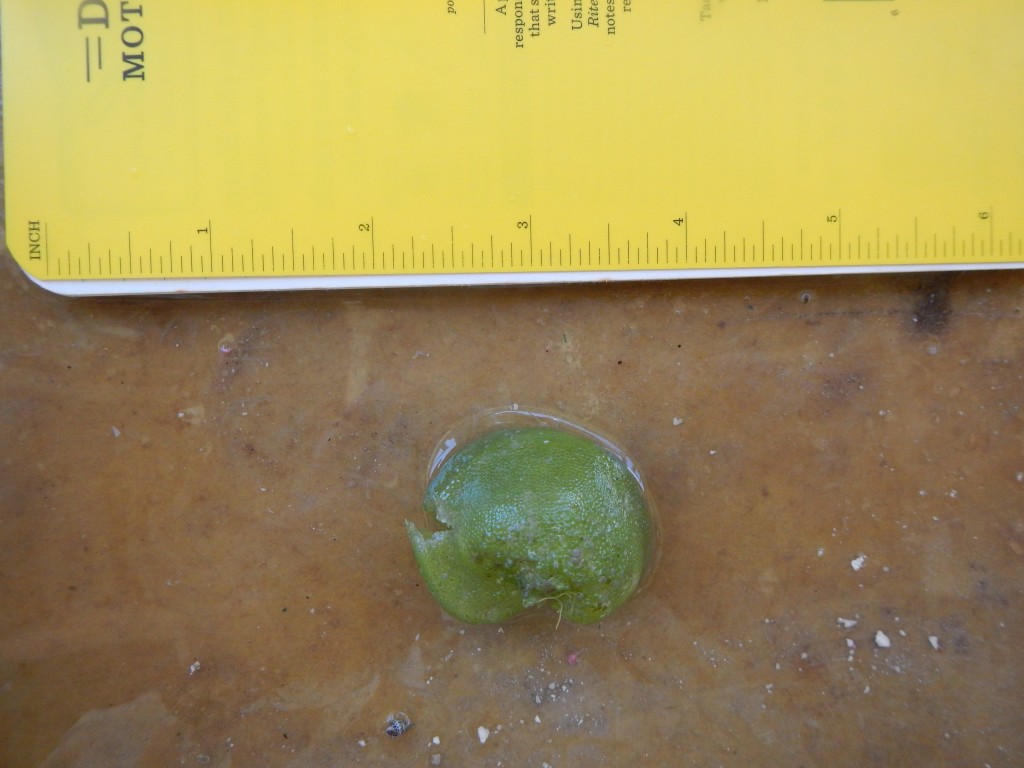
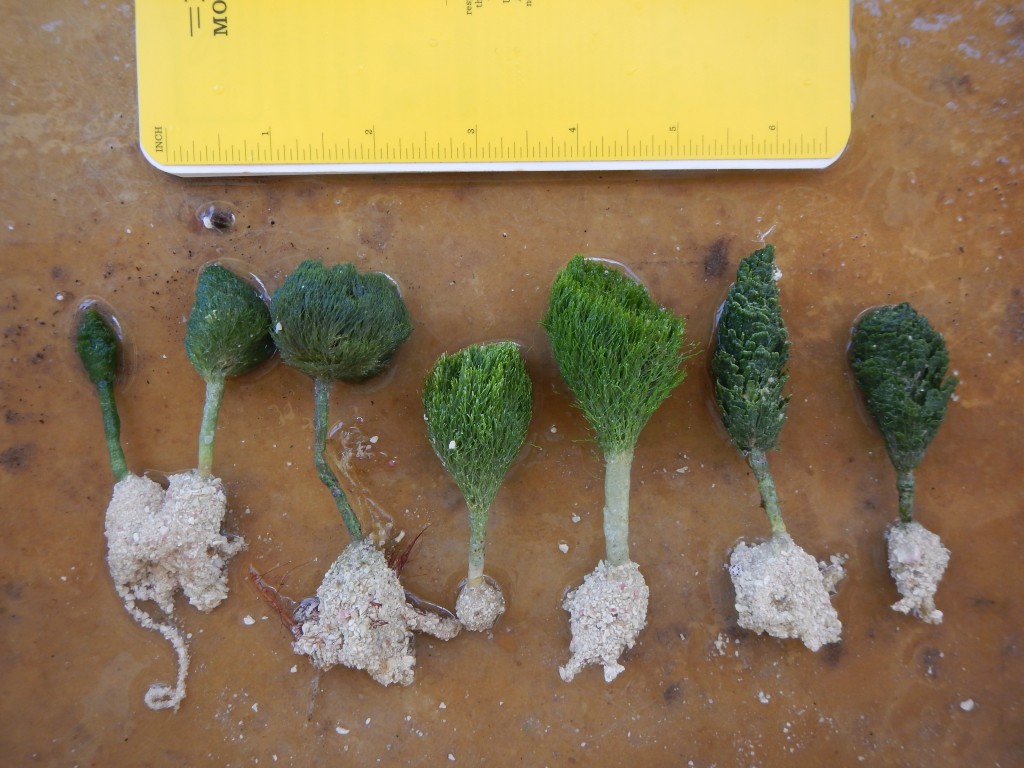
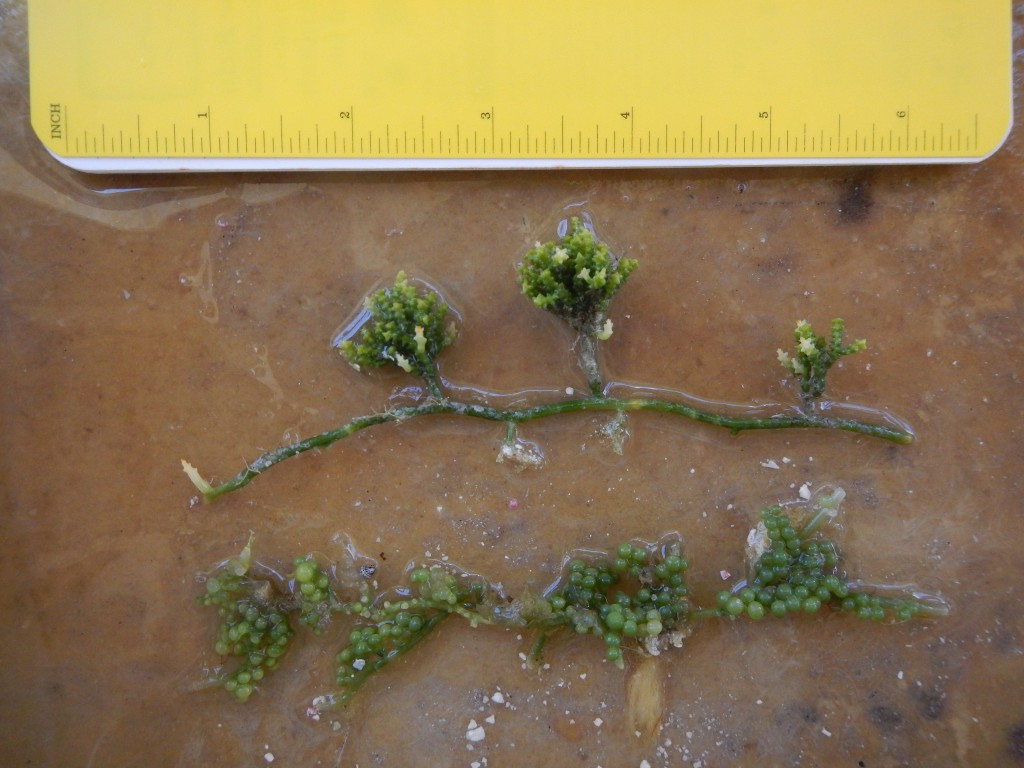
In the afternoon we dissected lionfish to record their dimensions and what they were eating. We had caught 4 lionfish, and the individual that my group dissected had puncture wounds in its face from the spear. The most difficult part of the dissection was attempting to sex the fish. Ultimately my group was not able to determine where the gonads were, so we couldn’t tell whether it was a female or a male. We opened up the lionfish’s stomach and found a much smaller fish that was barely digested. The lionfish was 19cm from mouth to the tip of the tail, and the ingested fish was 2cm long. Lionfish stomachs can expand to 30 times their empty size, which made the stomach of our individual comparatively empty.
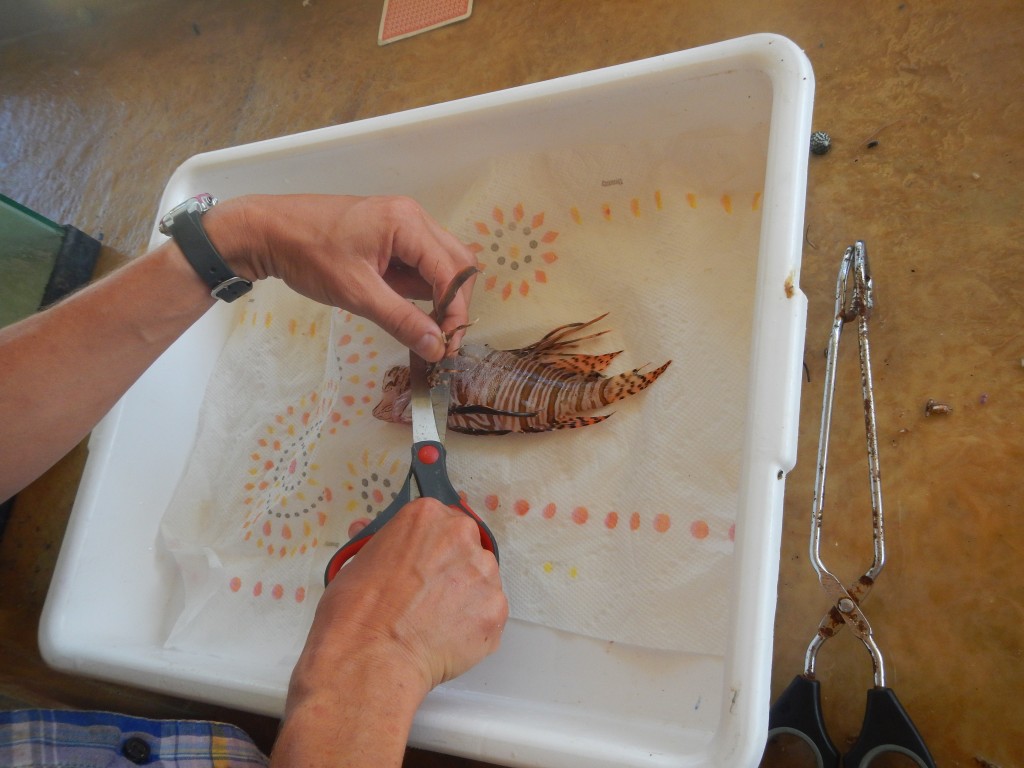
By this time tomorrow we will all be back in the United States. Tomorrow promises to be a crazy day, and I’m looking forward to end the trip with the same spirit that we have had throughout our time here.

